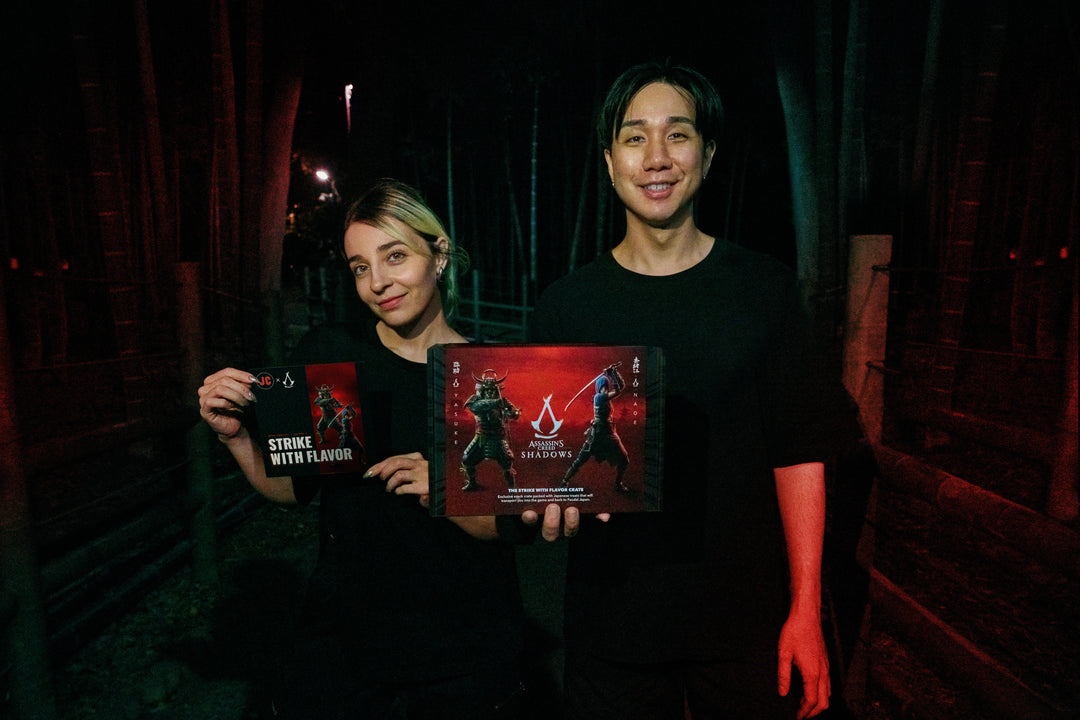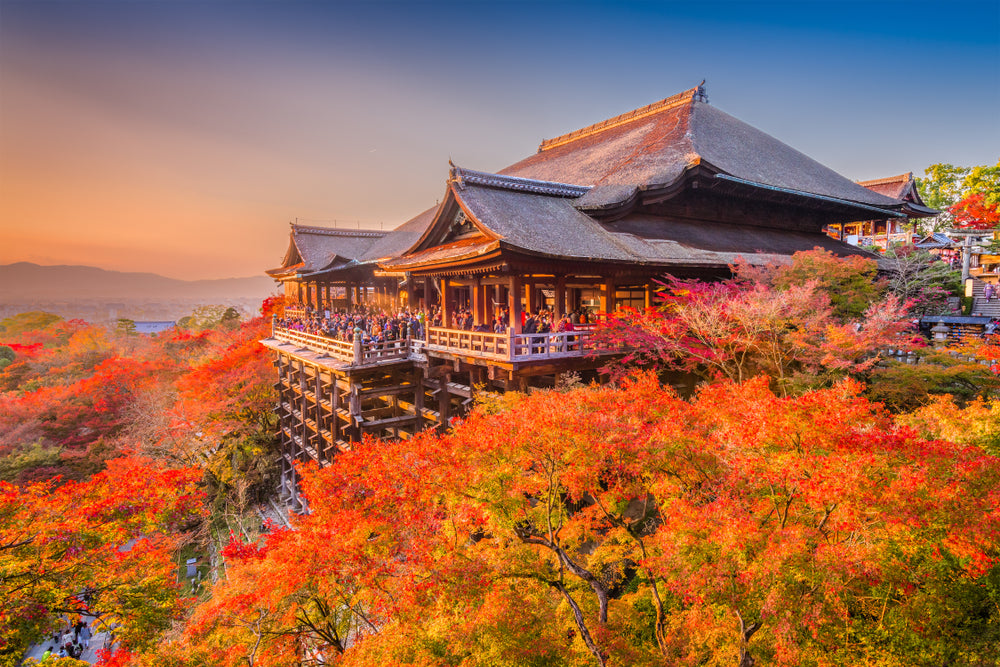Dango Recipe (Hanami, Bocchan & Mitarashi Sweet Dumplings)
Japan is known for many delicious snacks, but have you ever heard of Japanese sweets? In Japan, sweets are referred to as wagashi, and many Japanese consider them to be a favorite type of snack. While some of these treats have a long history, others are works of art in themselves. They are prepared using various ingredients and preparation techniques in a wide range of forms and consistencies. Additionally, some wagashi are only offered locally or at specific seasons of the year, while others are well-liked all around the country. And one classic Japanese dessert cuisine that will satisfy a sweet tooth is the Japanese Dango. Here's everything you need to know about mochi, from its rich history to the easiest recipe you can make in the comfort of your home!
What is Dango?

Dango is among the most well-known wagashi, or Japanese sweets, ever produced. Dango is regarded as Japan's national sweet and is known as dansu in the Tohoku region of northern Japan, anbu in Niigata Prefecture, and omaru in Shiga Prefecture and the Shikoku region. These Japanese Dango are round glutinous rice flour dumplings that are typically skewed in a bamboo stick. Three to five dango is frequently served on a bamboo skewer. Dango is created from powdered grains and cereals, typically Japanese rice flour (mochiko), to which water is added, molded into balls, and then steamed and boiled. This is not to be mistaken with the well-known mochi rice cakes made straight from non-glutinous rice flour. Even though the substance is primarily tasteless and colorless, it may contain components that have been flavored to give the dough balls a flavor.
They are frequently topped with sweet soy sauce glaze or anko red bean paste. The nicest part about the dango is that its pierced stick resemblance to a lollipop candy, they make the ideal portable street snack. There are many different types of dango available nowadays, including hanami dango, cha dango, shoyu dango, Hana yori dango, kinako dango, otoko dango, sanshoku dango, shiratama dango, and tsukimi dango. The most well-known version is mitarashi dango, typically served with sweet soy sauce-based syrup. The soft and chewy dango deserves the praise they have received in the world of Japanese snacks. They are truly an exceptional treat because of their chewy texture and assortment of tastes.
History of Dango

The dango rice balls may have been there for hundreds of years, just like many other Japanese sweets and pastries. As far back as two thousand years ago, it is thought that nuts were first ground into a fine meal, blended with rice porridge, and then shaped into dango balls. A healthy homemade version of a hunter-gatherer popsicle from the Stone Age might be compared to a dango.
According to legend, the modern dango was created in Kyoto's Kamo Mitarashi tea house in the early 1900s. According to some legends, the Mitarashi dango was inspired by an emperor's visit to Kyoto's Shimogamo Shrine in the 1300s. The emperor washed his hands in the mitarashi (purifying water) at the shrine's entrance when he saw five bubbles. The five sphere-shaped bubbles stood in for the five Mitarashi dango dumpling balls. As soon as this happened, visitors to the nearby Shimogamo Shrine gave Mitarashi dango as a gesture of respect and a wish for luck in the upcoming year.
What are the Different Types of Dango?
1. Denpun Dango

Denpun is a type of dango from Hokkaido that is renowned for its cold winters. This sweet dish is frequently consumed as a filling snack because it is created with potato starch and simmering sweet beans. It is believed that the denpun dango was initially produced after World War II. Today, it makes a wonderful souvenir from a trip to Hokkaido.
2. Bocchan Dango

Bocchan dango is a colorful variation of the common Japanese candy dango. It consists of three balls on a skewer, each colored differently and made with a distinct ingredient: red bean paste for the red ball, eggs for the yellow ball, and green tea for the green ball.
3. Sasa Dango

Sasa dango is a Japanese dango in which bamboo leaves are used to encase rice cakes filled with red bean paste. The Niigata prefecture is known for its traditional preparation of this dessert. Despite being created for the Tango no sekku festival, it is now offered all year long thanks to its fantastic flavors. The word "sasa" used to describe this dish is an assortment of bamboo leaves. Glutinous rice is cooked and crushed into a rice cake to make sasa dango.
4. Ikinari Dango

The chewy ikinari dango is a Japanese steamed delicacy that is typically served warm and is constructed with a thick slice of yellow sweet potato, topped with red bean paste, and wrapped in mochi dough. These delicious snacks' name, which translates to "sudden dumplings," alludes to their simple, fast preparation with just three common ingredients. These sweets are relished as a sweet treat regularly and were created in the Kumamoto Prefecture, where they are usually presented on many special occasions.
5. Kibi Dango

Kibi dango are straightforward Japanese candies with a strong cultural foundation. They are made of a doughy mixture of rice and millet flour formed into huge, spherical balls. They were first presented as gifts at the Kibitsuhiko jinja shrine in Okayama, where their history is connected with that city. The treats were promoted as a genuine regional memento when Okayama started to draw in tourists. Kibi dango were changed into round balls without any fillings from their previous form, with a square-shaped wrapper with a red bean filling.
6. Goma Dango

Goma dango, a type of Japanese sweet food, is made with sesame seeds. These tiny rice flour balls are deep-fried, initially at moderate temperatures, then at high temperatures near the finish of frying, giving them a crispy outside and an interior filled with sweet red beans (anko). The goma dango, a sweet and salty summer treat, is frequently eaten at street fairs or restaurants in August.
7. Hanami Dango

Hanami dango, which are delicious mochi rice dumplings on a stick, come in a variety of colors. Pink dango is used to signify cherry blossoms, plain white dango is used to signify the last of the winter's snow, and green dango is used to signify spring's beginning by signifying fresh grass's color. The dish bears the name of the well-known Japanese custom of hanami, which translates to "flower viewing." The cherry blossoms bloom tradition, which is thought to have originated in the Nara or Heian eras (794-1185), is still observed today around late March in Kyushu and mid-May in Hokkaido.
8. Mitarashi Dango

Traditional Japanese rice dumplings called Mitarashi Dango are covered in a sweet soy glaze. The dumplings are served skewered on a bamboo stalk all year long. They are customarily made with five round cakes, just as they were at the Kamo Mitarashi Tea House in Kyoto when they were first created. Japanese chefs give their desserts a salty, sticky flavor by dipping the rice dumplings in a sauce made of rice wine and plant starch. It is thought that mitarashi got their name because they resemble the water bubbles found in the water basins at the entryway of Shinto shrines. These days, they are widely consumed nationwide and easily accessible in convenience stores and specialty dango establishments.
How to Make Hanami Dango?

Ingredients:
-
Joshinko glutinous rice flour
-
Shiratamako glutinous sweet rice flour
-
Powdered sugar
-
Hot water
-
Matcha powder
-
Pink food coloring
Cooking Instructions:
-
First, submerge the bamboo skewers in water.
-
Add the hot water to the bowl containing the rice flour. Start blending with a spoon, and after the dough starts to take shape, mold it together with your hands. If necessary, add a bit extra flour or water. The dough should have a softer, clay-like feel.
-
Divide the dango dough into three equal portions. Put each one in a different bowl.
-
One drop of strawberry powder or pink food colouring should be added to one piece of dough and mixed in until all white is gone.
-
The matcha powder should now be combined with 1 teaspoon of water to create a paste. After that, incorporate it thoroughly into a different piece of dough to make green balls dango. The final slice of dough should not change color.
-
Start rolling the dough into balls right away. The weight of each ball can be determined by weighing it on a kitchen scale.
-
First, cook the white balls by bringing a pot of water to a boil. Cook them for an additional 2 minutes when they reach the top of the saucepan.
-
Once cooked, place the steamed dango in a dish of ice water using a slotted spoon.
-
To prevent the water from becoming stained, repeat this procedure with the pink and then the green dango.
-
Make careful to arrange the balls on the bamboo skewers in the following order: green, white, and pink. Serve plain or with a garnish.
How to Make Mitarashi Dango?

Ingredients:
-
Water
-
Soy sauce
-
Mirin
-
Sugar
-
Cornstarch
-
Mochiko Rice flours
-
skewers for serving
Cooking Instructions:
-
First, combine the mochiko, sugar, and boiling water in a bowl.
-
Hand-mix the mixture until it resembles clay when squeezed.
-
Cut the dough in thirds.
-
Divide the dango dough and make three equal portions of the dango ball. Boil for 5-8 minutes or until the dango float to the top.
-
Remove and let cool a little before sticking a skewer into the bamboo. Place aside.
-
Additionally, combine water, cornstarch, soy sauce, and sugar in a small skillet to make the sweet soy sauce glaze. Then bring to a boil over medium heat.
-
Lightly toast the dango in a dry nonstick pan.
-
Glaze the Mitarashi sauce in the dango. Enjoy!
How to Make Bocchan Dango?

Ingredients:
-
Joshinko rice flour
-
Shiratamako glutinous flour
-
Warm water
-
Anko red bean paste
-
2 egg yolks
-
Matcha powder
Cooking Instructions:
-
In a bowl, mix the Joshinko and Shiratamako flours. You can use chopsticks to combine while adding heated water. When the flour begins to stick together, begin kneading the dough until it is smooth. Then combine to form a sizable dough ball.
-
Make eight equal pieces of dough. Make two balls out of each piece after that. Ideally, each ball should weigh around 20 grams.
-
Form into a lovely, smooth round ball. Apply a small bit of water to the cracked portion of the dough to smooth it out if it is cracking.
-
Combine the anko red bean paste into a single piece of dango balls before being gently kneaded until the color is uniform. For the green color, combine 1 teaspoon of water with 1 teaspoon of matcha powder. Then combine the paste and dough ball carefully. And add egg yolks to the dough ball to have yellow-colored dango balls.
-
Simmer water in a large saucepan. Once the water in the kettle has reached a rolling boil, carefully add each dumpling. Then simmer for 1-2 minutes. When the dumplings reach the top, remove them.
-
Put the dango dumplings in a bowl of icy water. After cooling, transfer to a tray and thoroughly drain.
-
Place the balls on the bamboo skewers before serving.
How to Store Dango?

After being made, your dango dumplings can be frozen and kept in the freezer for a few months. Place it in the freezer and cover it with an additional layer of cling wrap. However, do not allow any of the balls to touch one another when you distribute them onto a flat plate or container coated in cling film layers. Then you can put the frozen balls in a ziplock bag and put the bag back in the freezer.
Moreover, frozen dango will have a chewier, slightly tougher texture. To keep the texture as close to the original as possible, thaw it in the refrigerator instead of in the microwave. Only when the dango has completely defrosted should you reheat it in the microwave for 15 to 20 seconds if you prefer your dango warmer.
It's Japan Crate Time!
This variety of Dango is just one of the many delicious and well-loved Japanese sweets you'll need to try. There are still hundreds of sweets and delicacies that will delight your tongue and are all available at Japan Crate. The sweetest and tastiest Japanese candies and sweets are available at Japan Crate. Get a monthly delivery of exclusive Japanese products to enjoy the wonderful flavor of Japan with Japan Crate! Get your first crate now!
Author Bio







Leave a comment